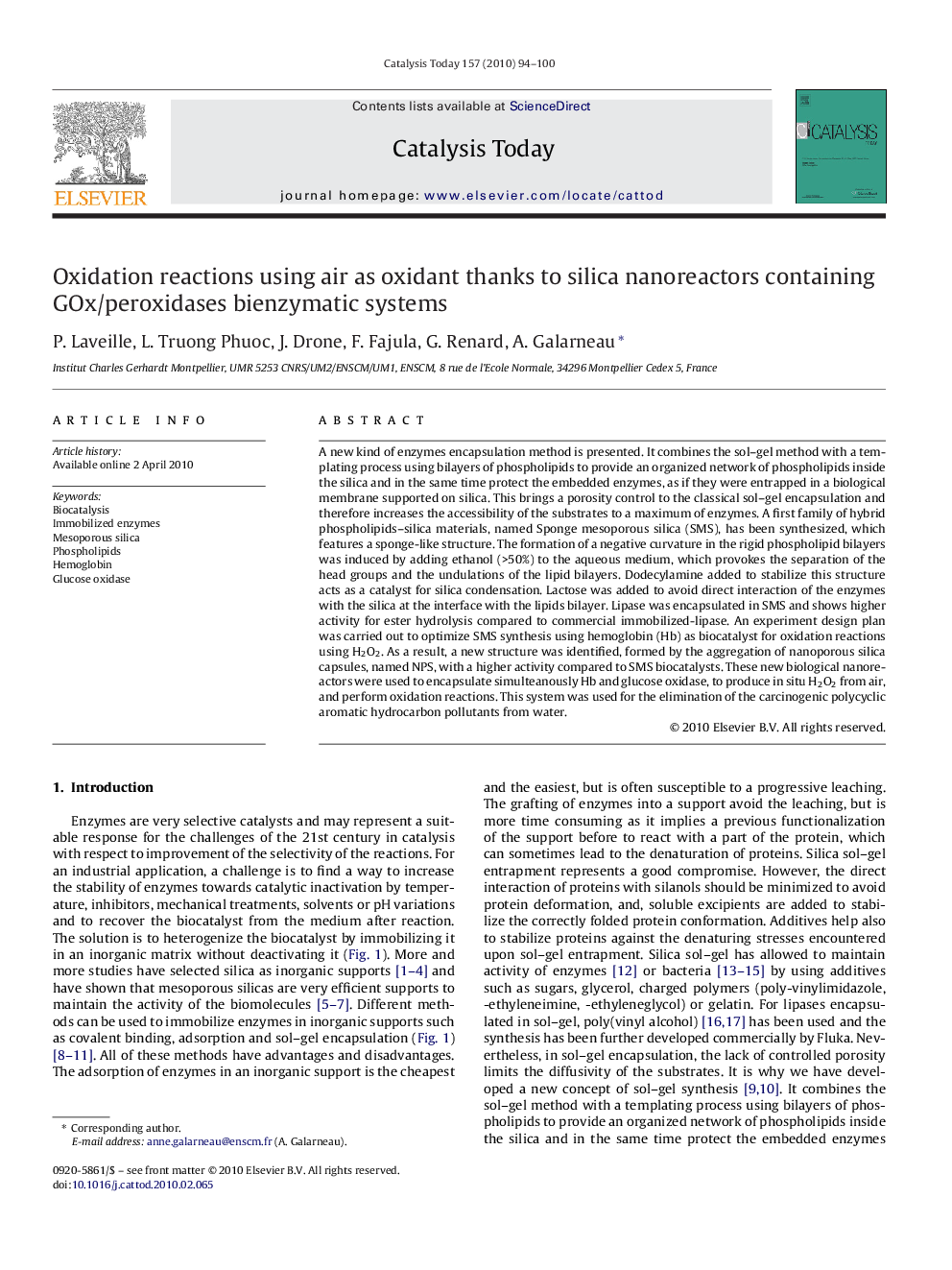| Article ID | Journal | Published Year | Pages | File Type |
|---|---|---|---|---|
| 56202 | Catalysis Today | 2010 | 7 Pages |
A new kind of enzymes encapsulation method is presented. It combines the sol–gel method with a templating process using bilayers of phospholipids to provide an organized network of phospholipids inside the silica and in the same time protect the embedded enzymes, as if they were entrapped in a biological membrane supported on silica. This brings a porosity control to the classical sol–gel encapsulation and therefore increases the accessibility of the substrates to a maximum of enzymes. A first family of hybrid phospholipids–silica materials, named Sponge mesoporous silica (SMS), has been synthesized, which features a sponge-like structure. The formation of a negative curvature in the rigid phospholipid bilayers was induced by adding ethanol (>50%) to the aqueous medium, which provokes the separation of the head groups and the undulations of the lipid bilayers. Dodecylamine added to stabilize this structure acts as a catalyst for silica condensation. Lactose was added to avoid direct interaction of the enzymes with the silica at the interface with the lipids bilayer. Lipase was encapsulated in SMS and shows higher activity for ester hydrolysis compared to commercial immobilized-lipase. An experiment design plan was carried out to optimize SMS synthesis using hemoglobin (Hb) as biocatalyst for oxidation reactions using H2O2. As a result, a new structure was identified, formed by the aggregation of nanoporous silica capsules, named NPS, with a higher activity compared to SMS biocatalysts. These new biological nanoreactors were used to encapsulate simulteanously Hb and glucose oxidase, to produce in situ H2O2 from air, and perform oxidation reactions. This system was used for the elimination of the carcinogenic polycyclic aromatic hydrocarbon pollutants from water.
